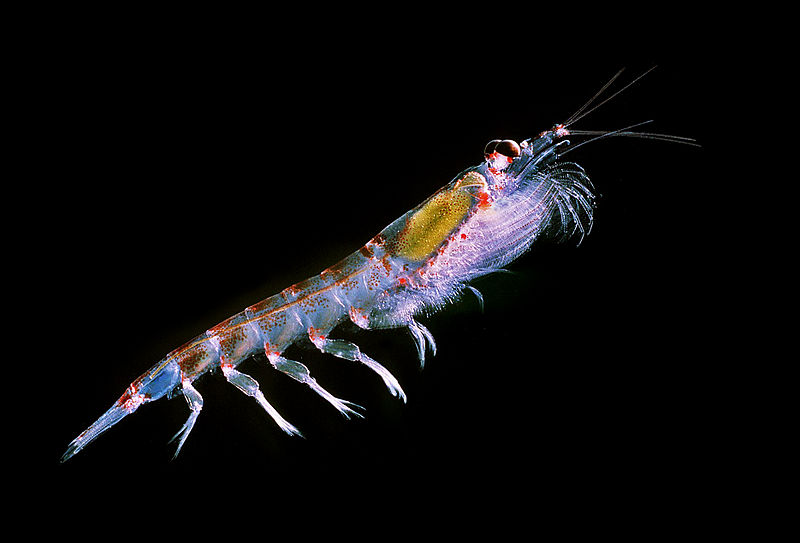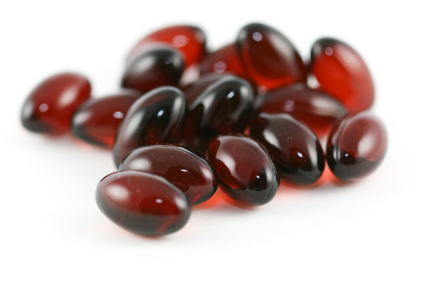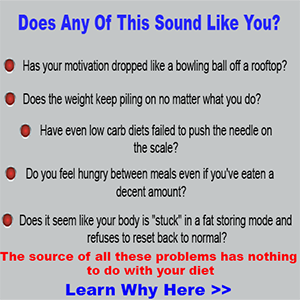Why Everybody Needs Omega-3 Essential Fatty Acids: Part II
By Cassandra Forsythe-Pribanic, PhD, RD, CSCS
In Part I, you learned what essential fatty acids (EFAs) are and why you need them. You also learned the difference between omega-6 and omega-3 EFAs and how one is more abundant in our diet than the other. Now we’ll look further into the benefits of omega-3s, specifically EPA and DHA, and show why marine-based omega-3s are your best choices.
Omega-3s for you and me
Most scientific research conducted on omega-3 EFAs focuses on EPA and DHA from marine sources. These unique fatty acids have confirmed a wide-range of health benefits including reducing heart disease risks and incidences, decreasing cancer tumor growth, and improving insulin sensitivity in both human and animal research. They also show promise for calming the flames of arthritis and are beneficial for keeping our minds and body healthy:
A happier, healthier brain
If someone called you a fat-head, they really wouldn’t be insulting you. Your brain is actually rich in fats, and omega-3s serve important roles. Brains lacking DHA are more likely to be prone to depression, schizophrenia and bipolar disorder. ADHD is also associated with low blood EPA and DHA and high omega-6 levels, while depression can be reduced with EPA/DHA treatment. Finally, mild Alzheimer’s patients given EPA/DHA supplements have be shown to have improved cognitive scores after 6 months of treatment.
Improved body composition
Lowering body fat mass and increasing or maintaining muscle is the goal of most body re-composition regimes and EPA/DHA supplements may help. Overweight men and women given 6g/day tuna oil (containing ~1.9 g omega-3s) for 12 weeks combined with a moderate exercise plan had clinically significant losses of body fat (an average of 3.3 lbs of fat). Additionally, healthy men and women substituting 6g/d fish oil for 6g of other dietary fat had beneficial reductions in body fat (a loss of ~2lbs of fat) and increased lipid oxidation (fat burning) after just 3 weeks. Although not many studies have been conducted on EPA/DHA supplements and body fat losses, there seems to be some benefit, mostly by increasing the amount of fat burned as a fuel. In my own research experience, I noted an increased loss of fat mass (as measured by DEXA, the gold standard of body composition measurement), when 10 men were given low-carb diets high in EPA/DHA from omega-3 eggs and fish for 6 weeks compared to diets low in EPA/DHA. This was even when the diets were fed at such a level that body weight was maintained.
Overall, long-chain omega-3 fats, EPA and DHA, may work to decrease body composition by being incorporated preferentially into cell membranes and/or used to create beneficial anti-inflammatory processes rather than being stored as body fat.
Joint pain reduction
Rheumatoid arthritis is one of the most common inflammatory illnesses that shows improvement with marine-based omega-3 EFA supplementation (fish, seal and krill oils). In two recent meta-analyses, one conducted by Goldberg and Katz, and one by Ruggiero et al, it was found that omega-3 EPA/DHA improve pain intensity, morning stiffness, number of affected joints, physical performance and amount of pain medication used to alleviate symptoms.
Omega-3 ALA also has benefits
The omega-3 plant-derived counterpart, ALA, has been studied less extensively even though it’s the major omega-3 consumed in the typical North American diet – we saw how many foods contain it in Part I, compared to foods with EPA and DHA. Studies that have looked into the health benefits of ALA show that it does have advantages for humans. For example, men taking 30g flaxseed /day have reduced prostate cancer cell growth and increased apoptosis, in addition to reduced PSA levels (a marker of prostate cancer risk). For women, higher versus lower ALA intake confers a significant reduction in breast cancer risk. Inflammation, arterial stiffness and cardiovascular disease outcomes are also all reduced with greater ALA intake.
Look To The Sea For Omega-3
We learned in part I that there are basically two ways to get your omega-3s: consume plant oils like flax, hemp, chia and pumpkin, which mostly contain ALA; or take in omega-3 EPA and DHA from the sea in the form of fish, algae or shellfish. As we’ve seen, there are more potent effects and ideal results when sea-based omega-3s are consumed.
In recent years, a new marine omega-3 source has been identified to help us meet our needs for this important nutrient. Although fish oil is usually the most popular of the omega-3 supplements, many people dislike the common “fish burp” effect that they get when taking it. As a result, krill oil has been noted to be a wonderful substitute that is free of this unpleasant side-effect. And, because the fatty acids within krill oil may be more effective than those in fish oils, less of it needs to be taken.
Krill As A New Option For Omega-3 Health
Krill is a tiny shrimp-like creature rich in omega-3 essential fatty acids. This two-inch long crustacean is one of the most abundant marine life living in some of the most frigid seas of the world. It’s estimated that the biomass of Antartic krill (Euphausia superba) is about 700 million metric tonnes, but because these little creatures are regularly eaten by whales, seals, penguins, and sea birds, the current regulatory catch quota is just 6 million metric tonnes. However, due to factors such as the remoteness of the fishery, the actual catch is much less. Over-fishing of krill is highly protected because loss of this animal would undermine the food web and devastate marine life.

In order for krill to survive in the cold Antarctic waters, their cell membranes carry a large content of EPA and DHA, making them highly fluid. This unique feature, combined with a lack of toxic build-up makes them a popular, safer alternative to fish oil. Another attractive feature is their natural content of powerful antioxidants such as the carotenoid, astaxanthin, which is responsible for giving salmon its bright red color. Farmed salmon don’t eat krill, so their red color comes from astaxanthin supplements plus artificial color.
Krill Phospholipids
Unlike typical fish oil lipids, which carry all of their EPA and DHA in triglycerides, most of the EPA and DHA in krill is linked to phospholipids, particularly phosphotidylcholine (PC). Remember how triglycerides look like little letter “E’s” by virtue of three fatty acids attached to a glycerol molecule? Well, phospholipids look somewhat similar, but only have two fatty acid tails attached to glycerol, with an additional phosphate group. In the case of PC in krill, there is also a choline molecule attached to the phosphate, as pictured below:
The benefits of carrying EPA and DHA in this phospholipid form is that they are efficiently taken up by intestinal cells once they are liberated from glycerol via the enzyme phospholipase A2. This is in contrast to triglycerides, whose absorption can be affected by other dietary factors, such as calcium and fiber. Also, the choline component of krill phospholipid is an important nutrient for brain development, and memory – that’s why choline requirements are increased during pregnancy and lactation (a brain benefit for both mommy and baby).
Research With Krill
Krill oil is being researched more and more now, and is showing benefits for disorders related to excess inflammation and cardiovascular disease risk. It’s even been compared directly to fish oil in a few trials and has been shown to be superior:
Krill oil for PMS treatment
Seventy women with diagnosed PMS were treated with either 2 grams of krill oil or fish oil for three months. Both oils provided 600 mg of EPA and DHA, but krill also had the additional naturally occurring phospholipids. Although both oils reduced abdominal discomfort and swelling, dose for dose, krill oil outperformed fish oil for minimizing joint pain, irritability, depression, stress and bloating. The group receiving krill also took less analgesic pain medication during the perimenstrual days than the fish oil group.
Krill oil for heart health
Elevated blood LDL cholesterol, triglycerides and low HDL are well-known risk factors for heart disease. In a double-blind trial, krill oil was compared to fish oil in men and women with high LDL and triglycerides. For 90 days, these people either took 1-1.5g/day or 2-3g/day krill oil (depending on BMI), 3g of fish oil, or a placebo. At its lowest dose (1-1.5 g/day), krill oil significantly lowered LDL cholesterol and increased HDL, compared to fish oil and placebo groups. At 2 g/day, krill also significantly lowered triglycerides, while the highest krill intake (3 g/day) did not produce any additional benefit. The fish oil lowered cholesterol only marginally and failed to lower triglycerides at all.
Krill for reducing inflammation
CRP is a systemic marker of inflammation and is often elevated in people with heart disease and arthritis. In a recent study, 90 people with high CRP and either heart disease, rheumatoid arthritis or osteoarthritis, were given 300 mg/day krill oil or a placebo. After just 7 days, krill oil significantly reduced CRP by 19% in all subjects compared to the placebo. Then, after 30 days, it was reduced by 30%.
How Is Krill Better Than Fish Oil?
One would think that omega-3 EPA and DHA from any source would have similar effects on health and wellness outcomes. However, it’s suspected that other components, such as the astaxanthin, phospholipids, and other vitamins and minerals unique to krill oil work synergistically with the omega-3s to produce more potent effects so that less is needed. Another benefit of krill oil is less chance of rancidity (like the fish burps you get from normal fish oil capsules) due to the high antioxidant content. This fact alone improves compliance with a regular dosing regimen.
Astaxanthin = Awesome
The special antioxidant astaxanthin, found in the phospholipids of krill has recently been shown in a human study to protect DNA from damage and boost immune response. In one recent investigation, 42 young women given 2 mg of astaxanthin for eight weeks had lower blood markers of DNA destruction with increased activity of natural killer cells, indicating increased immune function. In another study, astaxanthin was shown to protect cells from the damaging effects of high glucose levels - as occurs with diabetes.

The Bottom Line On Omega-3 EFAs
As you can now see (or sea), omega-3 EFAs, especially those containing EPA and DHA from marine sources, are one of your best health allies. Whether you choose fish, krill or some other EPA/DHA supply, your body will thank you. With any of these oils, remember they are a supplement and are meant to compliment a well-rounded diet. You should still eat some fish (1-2 servings of salmon, trout, sardines per week), hemp foods, chia seeds, flax oil and pumpkin seeds weekly to balance out all the naturally occurring omega-6s that we eat every day. Omega-3 supplements, like those from Omega Icon, will further ensure you have an ideal balance of dietary omega-6s to omega-3s, and can bring you additional health benefits.
Check out one of the best Omega 3 supplements here => Complete Essential Fatty Acid
NEXT: Find Out If Krill Oil REALLY Better Than Fish Oil >>
Resources:
Miller, MR et al. n-3 Oil sources for use in aquaculture – alternatives to the unsustainable harvest of wild fish. Nutrition Research Reviews. 2008, 21:85-96
Anderson BM, Ma DW. Are all n-3 polyunsaturated fatty acids created equal? Lipids Health Dis. 2009 Aug 10;8:33
Denmark-Wahnefried W, Polascik TJ, et al.: Flaxseed supplementation (not dietary fat restriction) reduces prostate cancer proliferation rates in men presurgery. Cancer Epidemiol Biomarkers Prev. 2008, 17(12):3577-3587
Maillard V, Bougnoux P, et al. N-3 and N-6 fatty acids in breast adipose tissue and relative risk of breast cancer in a case-control study in Tours, France. Int J Cancer 2002, 98(1):78-83.
Watkins, C. Krill oil: next generation source of omega-3s? Inform 2007, 18, 588–590
Hill, SL, Murphy, EJ, Reid, K, et al.. Modelling Southern Ocean ecosystems: krill, the food-web, and the impacts of harvesting. Biol Rev Camb Philos Soc. 2006, 81, 581–608
Hill, AH, et al. Combining fish-oil supplements with regular aerobic exercise improves body composition and cardiovascular disease risk factors.. American Journal of Clinical Nutrition, 2007, 85(5) 1267-1274
Couet C, Delarue J, Ritz P, Antoine JM, Lamisse F. Effect of dietary fish oil on body fat mass and basal fat oxidation in healthy adults. Int J Obes Relat Metab Disord. 1997, 21(8):637-643.
Clarke SD. Polyunsaturated fatty acid regulation of gene transcription: a mechanism to improve energy balance and insulin resistance. Br J Nutr. 2000 Mar;83 Suppl 1:S59-66
Riediger ND et al. A systemic review of the roles of n-3 fatty acids in health and disease. J Am Diet Assoc. 2009 Apr;109(4):668-79.
Ruggiero C et al. Omega-3 polyunsaturated fatty acids and immune-mediated diseases: inflammatory bowel disease and rheumatoid arthritis. Curr Pharm Des. 2009;15(36):4135-48.
Goldberg RJ, Katz J. A meta-analysis of the analgesic effects of omega-3 polyunsaturated fatty acid supplementation for inflammatory joint pain. Pain. 2007;129:210-223.
Kidd PM. Omega-3 DHA and EPA for Cognition, Behavior, and Mood: Clinical Findings and Structural-Functional Synergies with Cell Membrane Phospholipids. Alternative Medicine Review 2007, 12(3)
Intestinal lipid metabolism. Mansbach, CM, Tso, P and Kuksis, A. 2001. Kluwer Acedemic, NY, pg 127.
Park JS et al. Astaxanthin decreased oxidative stress and inflammation and enhanced immune response in humans. Nutrition & Metabolism. 2010, 7:18Kim YJ et al. Protection against Oxidative Stress, Inflammation, and Apoptosis of High-Glucose-Exposed Proximal Tubular Epithelial Cells by Astaxanthin. Journal of Agricultural and Food Chemistry. Published online ahead of print,
About Jayson Hunter & Jaylab Pro

Jaylab Pro was founded by Registered Dietitian Jayson Hunter. Jayson has been recognized as one of America's foremost weight loss experts by America's Premier Experts™. He has also been featured in USA Today for this accomplishment. Jayson is also a best-selling author having co-authored multiple books in health & fitness and business growth. Jayson and the Jaylab Pro team are proud to create content that helps improve the lives of millions of people around the world. We hope you enjoy it just as much as others have.
 If you order a JayLabPro SmartShip product or any Combo Package, we will automatically ship you a new supply of the product or products you have ordered every month, starting 30 days after your initial order is shipped, and continuing until you cancel. The credit card you are using today will be billed the lowest available price for those product or products when your order is shipped, but shipping will be FREE. You may log into your customer account or call our customer service department toll-free at 1-888-9GETPRO (1-888-943-8776) between the hours of 8am – 9pm EST Mon-Fri to cancel future shipments, customize the timing of your shipments, or change the credit card used for billing.
If you order a JayLabPro SmartShip product or any Combo Package, we will automatically ship you a new supply of the product or products you have ordered every month, starting 30 days after your initial order is shipped, and continuing until you cancel. The credit card you are using today will be billed the lowest available price for those product or products when your order is shipped, but shipping will be FREE. You may log into your customer account or call our customer service department toll-free at 1-888-9GETPRO (1-888-943-8776) between the hours of 8am – 9pm EST Mon-Fri to cancel future shipments, customize the timing of your shipments, or change the credit card used for billing.









